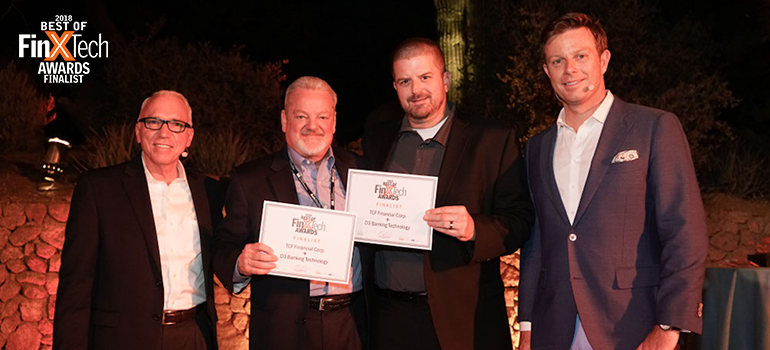
How TCF Financial Reinvented the Customer Experience
 In the spring of 2015, new leadership took over TCF Financial Corp., based in Minneapolis, and set about a course that would reshape the bank from the inside out.
In the spring of 2015, new leadership took over TCF Financial Corp., based in Minneapolis, and set about a course that would reshape the bank from the inside out.
At that time, the bank was in the midst of rebranding itself when Craig Dahl took over as CEO, and hired Tom Butterfield as chief information officer to usher in a new era of online banking that would keep the $23 billion asset bank on a level playing field with much larger competitors.
“We were not there. We had identified some pretty significant gaps in our market to our competitors,” Butterfield says. “Not the least of which was mobile remote deposit capture.”
That specific capability is coveted by both bankers and customers, who favor on-the-go functionality while banks enjoy the ability to increase their core deposits at a time when the competition for customer loyalty and their funds has increased sharply.
The bank went to market with a very specific request for information, or RFI, that solicited a very specific technological architecture that would remake its online user experience to be seamless between devices, but also adapt to its highly customized core technology and allow the opportunity for scale. While this limited the number of firms capable of handling the project, it also allowed the bank to customize its own technology. D3 Banking Technologies, based in Omaha, Nebraska, was one of the few who could handle the specific and unique request.
In the end, the D3 built an all-new online banking experience for TCF, which migrated 1.2 million accounts to the new platform over 15 months, from the time the board approved the funding for the project to complete migration, which they completed last fall.
D3, like other fintech partnerships, reinvented the TCF customer experience using application programming interfaces, or APIs, that function similar to a server at a restaurant. In TCF’s case, there are two layers of APIs that were necessary to adapt what Butterfield describes as a “highly customized” legacy core system that differs from typical core systems like those offered by Jack Henry, FIS or Fiserv. Butterfield described TCF’s core as “many many years old that doesn’t lend itself to interacting well with these modern technical platforms.”
The top layer is what D3 built and actually makes the experience, but there is a middle layer of APIs the bank built that connects the core, and also enables the bank to be able to customize and scale into other technologies, like voice commands (think Amazon Alexa or Google Home), and others.
The real-world implication of this new technology became clear when Apple rolled out its iOS 10, which swapped fingerprint recognition for facial recognition security. Mobile apps for megabanks like Bank of America were live with the new tech almost instantly. So was TCF.
“We feel like we can compete with the best banks in the country and the best platforms in the country,” Butterfield says.
Customers who had been migrated to the new system also had questions, Butterfield says. In anticipation of that transition, TCF put “digital ambassadors” into branches that offered customers—some of whom physically carried their laptops into the branch to get help—training on the new system, a scenario that represents the transformation that TCF put in place.
“The fact that our branches were a part of this story and part of this journey is a key piece of its success,” Butterfield says
Beyond the tech itself, Butterfield says the move to emphasizing technology inspired wholesale changes within the bank’s own culture. TCF literally tore down cubicle walls and put its IT and business staffs at the same table—often referred to as bench seating—reducing the barriers between the two wings of the bank that typically operate independently.
The integration fundamentally changed the way the bank works, making it unique compared to other banks who still hold true to traditional structures.
“That breaking down of silos is really key of how we got this done in 15 months,” Butterfield says.
Since the completed rollout in the fall of 2017, the bank has reduced payment processing costs by $1.3 million in the first year alone, and Butterfield said there has been a 400 percent increase in adoption rate, and a 250 percent increase in accounts opened by existing customers through the platform, and a reduction of 2.6 percent in checking account attrition, all signs the bank sees the tech has increased loyalty and potential for deposit growth, even as the largest banks grow their deposits over community and regional competitors.
“We’re definitely in the ball game,” he says.

